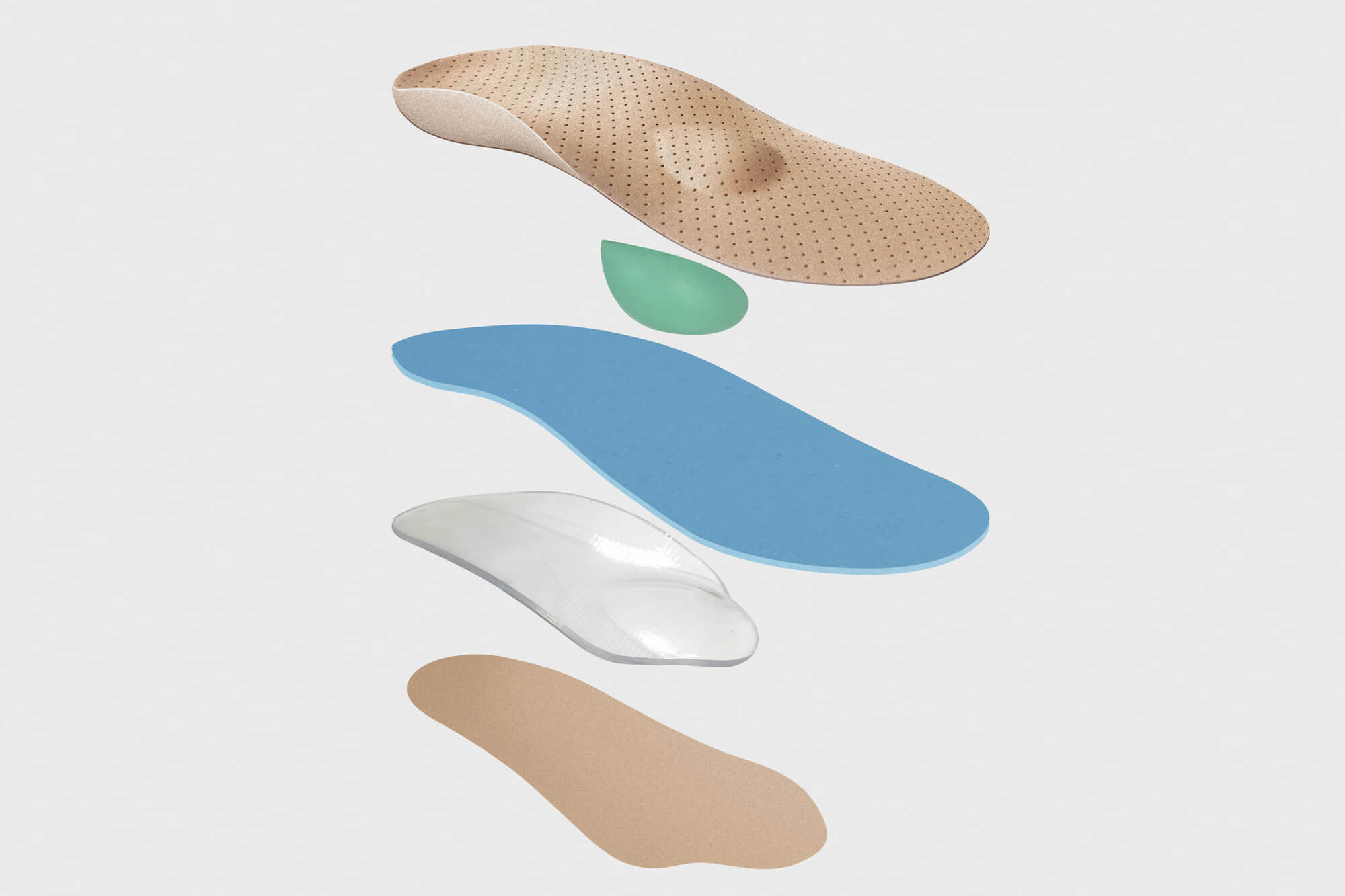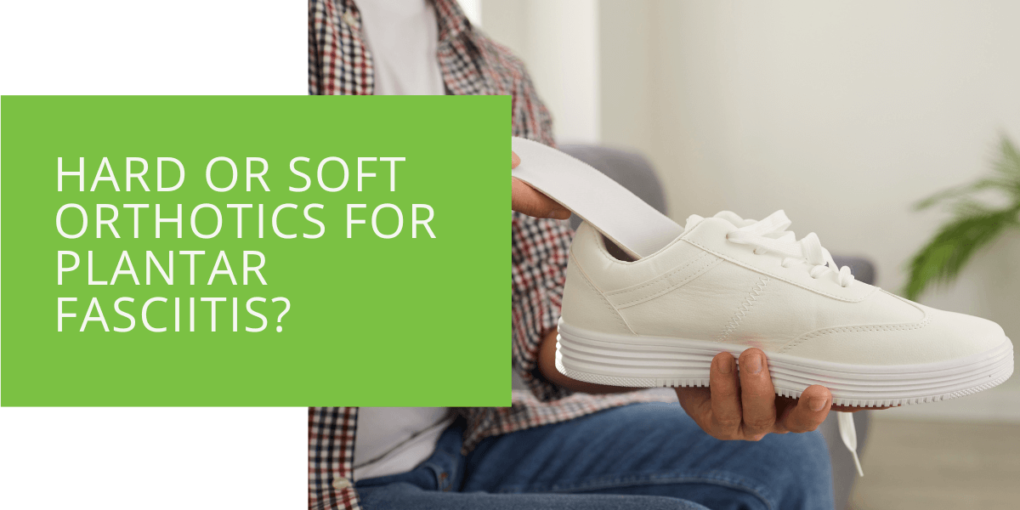Hard or Soft Orthotics for Plantar Fasciitis?
Plantar fasciitis is a common foot condition that can cause significant discomfort and affect daily activities. Orthotics, specially designed inserts for shoes, are a popular treatment option for managing plantar fasciitis. But which type of orthotic is best? This article explores the benefits and considerations of hard and soft orthotics, helping you make an informed decision.
Understanding Plantar Fasciitis
Plantar fasciitis is characterized by inflammation and pain in the plantar fascia—a band of tissue supporting the foot arch. This condition often results from overuse, high-impact activities, improper foot mechanics, or biomechanical issues like flat feet. Common symptoms include heel pain, especially in the morning or after long rest periods, and discomfort along the foot's arch.
Overview of Orthotics
Orthotics are inserts or insoles designed to support and align the feet. They aim to provide relief by improving foot function, reducing pressure on the plantar fascia, and enhancing shock absorption. Two main types of orthotics are commonly used for plantar fasciitis: hard orthotics and soft orthotics.
Hard Orthotics for Plantar Fasciitis
Hard orthotics, or rigid or semi-rigid orthotics, are often recommended for individuals with plantar fasciitis. These orthotics are typically made from plastic or carbon fiber materials and provide firm foot support.
Explanation and Mechanism
Hard orthotics work by controlling excessive foot pronation, a common contributing factor to plantar fasciitis. Pronation refers to the natural inward rolling motion of the foot during walking or running. However, excessive pronation can strain the plantar fascia, leading to inflammation and pain.
Hard orthotics help address this issue by providing stability and limiting pronation. They are designed to redistribute pressure evenly across the foot, reducing stress on the plantar fascia and promoting proper alignment. By controlling foot motion, hard orthotics can help alleviate the tension on the plantar fascia and support the foot arch.
Effectiveness and Research
Research has shown that hard orthotics can be effective in managing plantar fasciitis. A study published in the Journal of Foot and Ankle Research found that participants who used rigid orthotics experienced significant improvements in pain reduction and foot function compared to those who used soft or no orthotics at all1.
Hard orthotics are particularly beneficial for individuals with flat feet or excessive pronation, as they help correct foot alignment and support the arch. By controlling motion and providing stability, hard orthotics can help reduce the strain on the plantar fascia, alleviate pain, and promote proper foot function.
It's important to note that the effectiveness of hard orthotics may vary depending on individual factors and the specific biomechanical issues contributing to plantar fasciitis. Consulting with a podiatrist is crucial to ensure proper evaluation and recommendation based on your unique needs.

Soft Orthotics for Plantar Fasciitis
Soft orthotics, or cushioned or accommodative orthotics, are other orthotics commonly used for managing plantar fasciitis. These orthotics are typically made from cushioning materials like foam or gel and are designed to provide enhanced comfort and shock absorption.
Explanation and Mechanism
Soft orthotics reduce pressure and minimize the impact on the plantar fascia. They are designed to provide cushioning and distribute pressure more evenly across the foot, offering more forgiving and comfortable support. Soft orthotics are especially beneficial for individuals with sensitive or painful feet.
Soft orthotics help absorb shock during walking or running by providing cushioning, reducing the stress on the plantar fascia. They offer a cushioned layer between the foot and the ground, which can help alleviate discomfort and relieve sensitive areas of the foot.
Effectiveness and Research
While research specifically focused on soft orthotics for plantar fasciitis is limited, they have been found effective in managing other foot conditions. Soft orthotics benefit individuals with sensitive or painful feet due to their cushioning properties.
Soft orthotics can help distribute pressure more evenly, reducing localized pressure points on the foot. They provide shock absorption and cushioning, which can help alleviate pain and discomfort associated with plantar fasciitis. Those seeking additional comfort and support for their feet often favor soft orthotics.

Selecting the Right Orthotic for Plantar Fasciitis
Choosing the most suitable orthotic for plantar fasciitis depends on various factors, including foot structure, severity of symptoms, and individual preferences. Consulting with a podiatrist is crucial for a comprehensive evaluation and personalized recommendation. They can assess your foot mechanics, gait, and any underlying biomechanical issues to guide you toward the appropriate type of orthotic.
Combination Approach: Custom Orthotics
For some individuals, custom orthotics may be recommended. Custom orthotics are tailored to your feet, providing optimal support and alignment. They are created based on a detailed assessment conducted by a podiatrist or orthotics specialist. Custom orthotics offer a personalized solution for those with specific foot mechanics, severe symptoms, or unique requirements.
Conclusion
Both hard and soft orthotics can be effective in managing plantar fasciitis. Hard orthotics provide firm support, control pronation, and redistribute pressure, making them suitable for individuals with flat feet or excessive pronation. Soft orthotics offer cushioning and shock absorption, relieving sensitive areas and enhancing overall comfort.
When selecting the right orthotic for plantar fasciitis, it's crucial to consult with a podiatrist who can assess your specific needs. They will consider factors such as foot structure, severity of symptoms, and individual preferences to recommend the most appropriate type of orthotic for you. They may also discuss the option of custom orthotics, which provide a personalized fit and address specific foot mechanics or conditions.
It's important to note that orthotics should be part of a comprehensive treatment plan for plantar fasciitis, including stretching exercises, physical therapy, and lifestyle modifications. Orthotics alone may not resolve all symptoms but can significantly contribute to pain relief and improved foot function.
Remember, orthotics are not one-size-fits-all solutions. They should be properly fitted and evaluated by a podiatrist to ensure optimal effectiveness. Regular follow-up appointments may be necessary to monitor progress, make adjustments, and ensure ongoing support for your feet.

